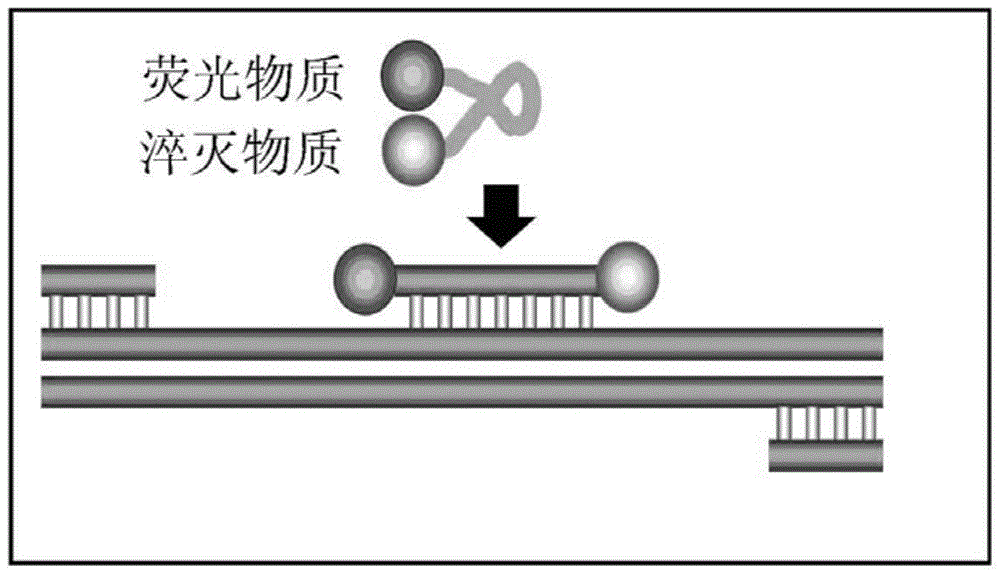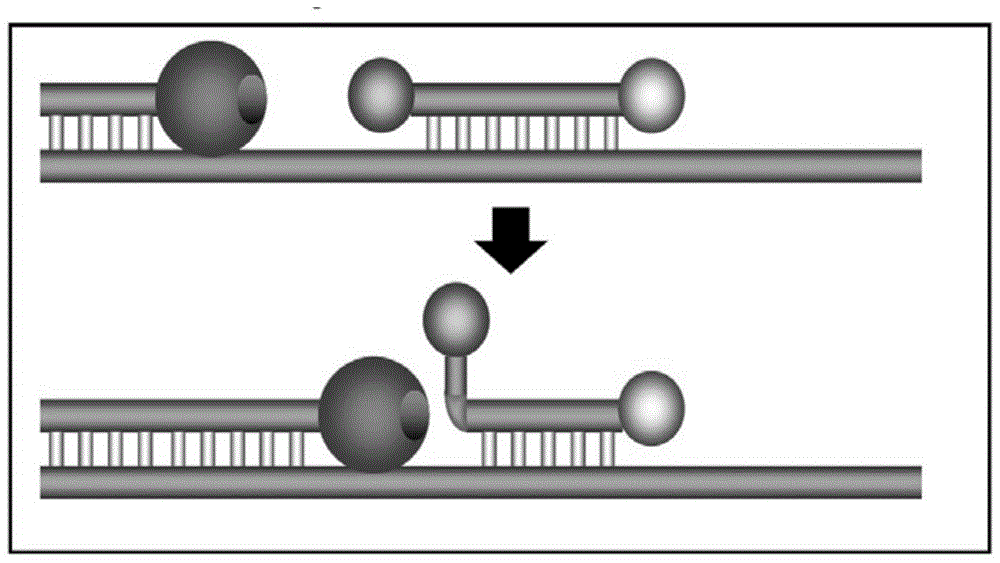A Fluorescent RT‑PCR Kit for Detection of Japanese Encephalitis Virus
A Japanese encephalitis virus and RT-PCR technology, which is applied in the field of bioengineering, can solve the problems of unfavorable large-scale sample detection, long kit time, complicated procedures, etc., and achieves the effects of easy result judgment, simple and fast method, and simple preparation.
- Summary
- Abstract
- Description
- Claims
- Application Information
AI Technical Summary
Problems solved by technology
Method used
Image
Examples
Embodiment 1
[0034] 1. Design and optimization of primers and probes
[0035] Sequence source: multiple strains of porcine Japanese encephalitis virus were searched through the NCBI gene bank, and a representative strain of the strain was downloaded from the gene bank. The accession number of the representative strain is JX040321.1. The sequences in the prM region of the porcine Japanese encephalitis virus genome were used as reference sequences for the design of primers and probe sequences.
[0036] prM represents the sequence reference sequence shown in SEQ ID NO: 1, with a full length of 501 bp.
[0037] By primer design software (Primer Express 3.0.1), the following sequence was designed:
[0038] Upstream primer J1: 5'-ACCAAGAAGTCTACGTCCAATATGG-3' (as shown in SEQ ID NO: 2);
[0039] Downstream primer J2: 5'-TTGGACCGACACGGATCTC-3' (as shown in SEQ ID NO: 3);
[0040] TaqMan probe sequence: 5'[FAM]-TGCACGCGGACCAGGCATTC-[TAMRA]3', (as shown in SEQ ID NO: 4);
[0041] The reporter fl...
Embodiment 2
[0079] (3) Samples with 30
[0080] The positive plasmids in the kit were taken separately, and the concentrations were determined to be 28.2ng / μl, and the 10-fold gradient dilutions were performed with DEPC water, and a total of 5 gradients were diluted, and fluorescent RT-PCR was performed for each dilution. Obtain its slope and correlation coefficient R 2 value.
[0081] Experimental results: For the standard curve of the plasmid, see Figure 4 , whose slopes are respectively -3.357, according to the formula E (amplification efficiency) = 10 -1 / 斜率 , converting the amplification efficiency into a percentage ((E-1)×100%) is 98.6%, between 90% and 110%, indicating that the amplification efficiency of this method is good; its R 2 The values are 0.996, between 0.99 and 1, indicating that the method has high reliability.
Embodiment 3
[0082] Embodiment 3 specificity test
[0083] Take 5 μL each of DNA and RNA from 5 samples of porcine blue ear virus strain, porcine pseudorabies strain, porcine parvovirus strain, BHK-21 cells, and porcine Japanese encephalitis strain as templates for fluorescent RT-PCR method For specificity detection, the plasmid plasmid was set as a positive control, the blank plasmid was used as a negative control, and DEPC water was used as a blank control group.
[0084] RT-PCR amplification conditions: 5 min at 42°C, pre-denaturation at 95°C for 10 s, cycled 40 times according to the following parameters: denaturation at 94°C for 5 sec, fluorescence collection at 60°C for 1 min. Fluorescence detection at 60°C, detection channels: FAM and TAMRA.
[0085] Fluorescent RT-PCR results show that: porcine Japanese encephalitis strain and positive control (see Figure 5 ) amplified an S-type positive curve, while the porcine blue ear virus strain, porcine pseudorabies virus strain, porcine p...
PUM
 Login to View More
Login to View More Abstract
Description
Claims
Application Information
 Login to View More
Login to View More - R&D
- Intellectual Property
- Life Sciences
- Materials
- Tech Scout
- Unparalleled Data Quality
- Higher Quality Content
- 60% Fewer Hallucinations
Browse by: Latest US Patents, China's latest patents, Technical Efficacy Thesaurus, Application Domain, Technology Topic, Popular Technical Reports.
© 2025 PatSnap. All rights reserved.Legal|Privacy policy|Modern Slavery Act Transparency Statement|Sitemap|About US| Contact US: help@patsnap.com



